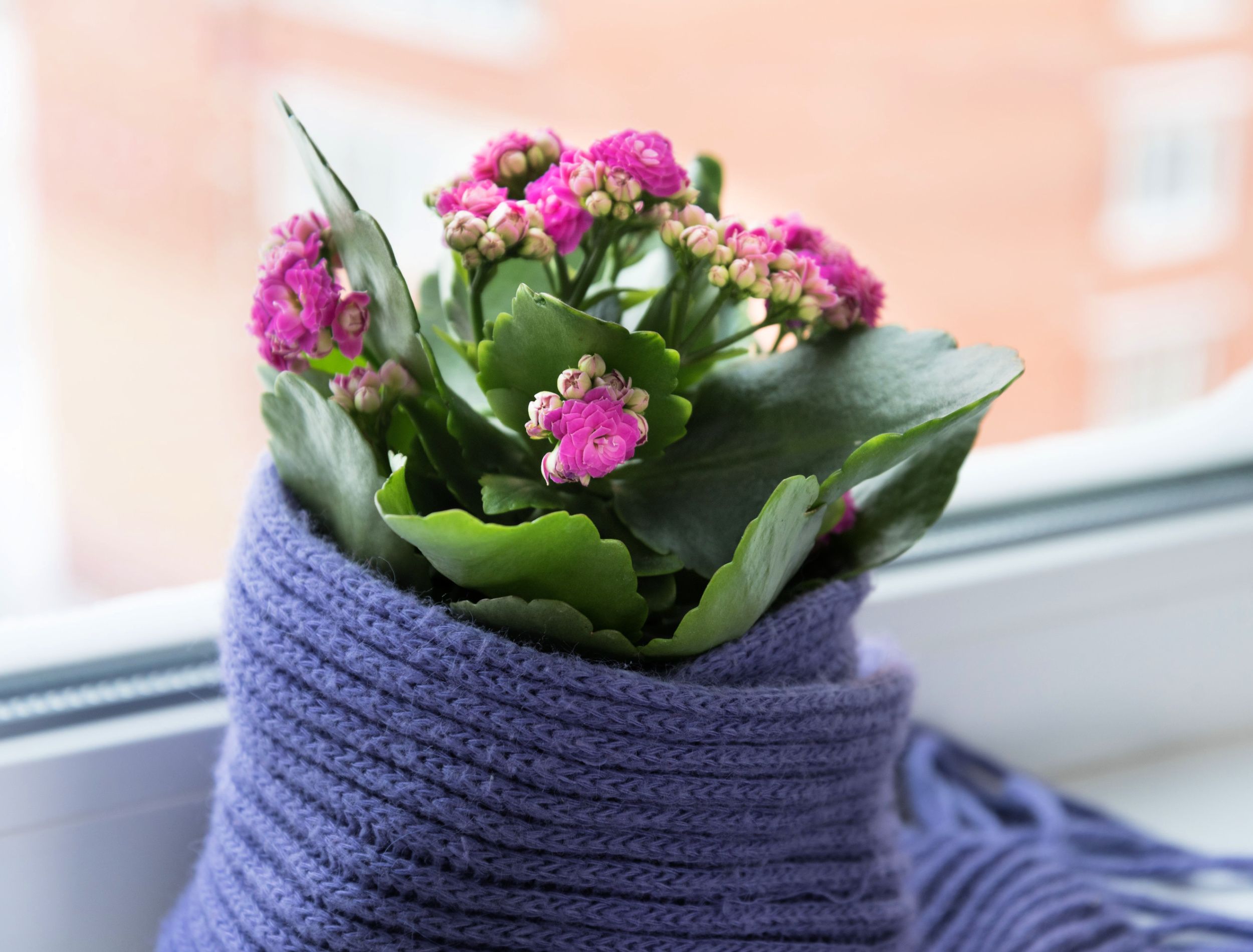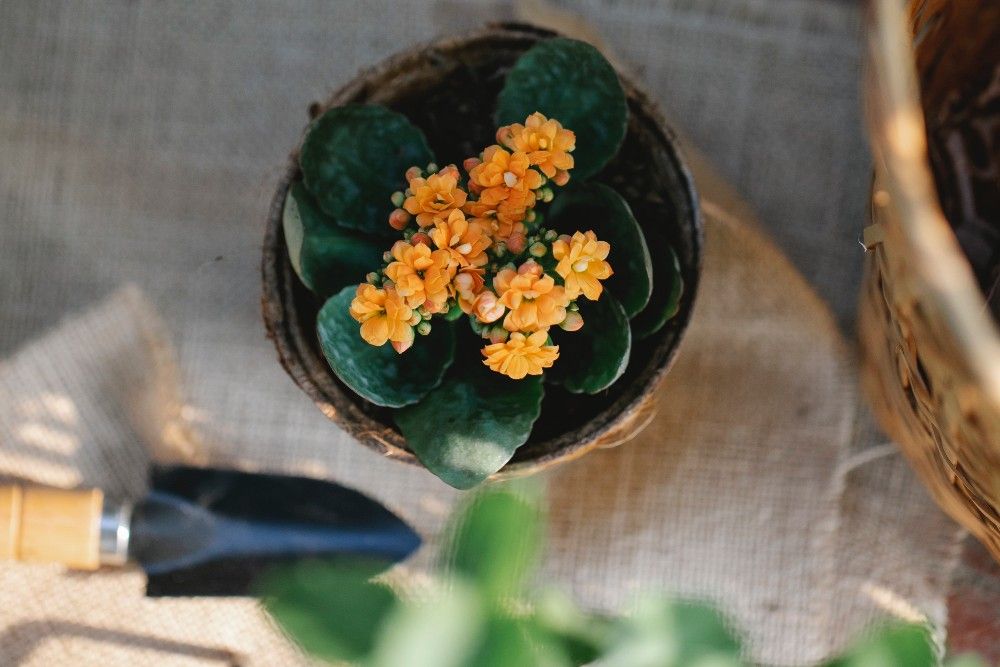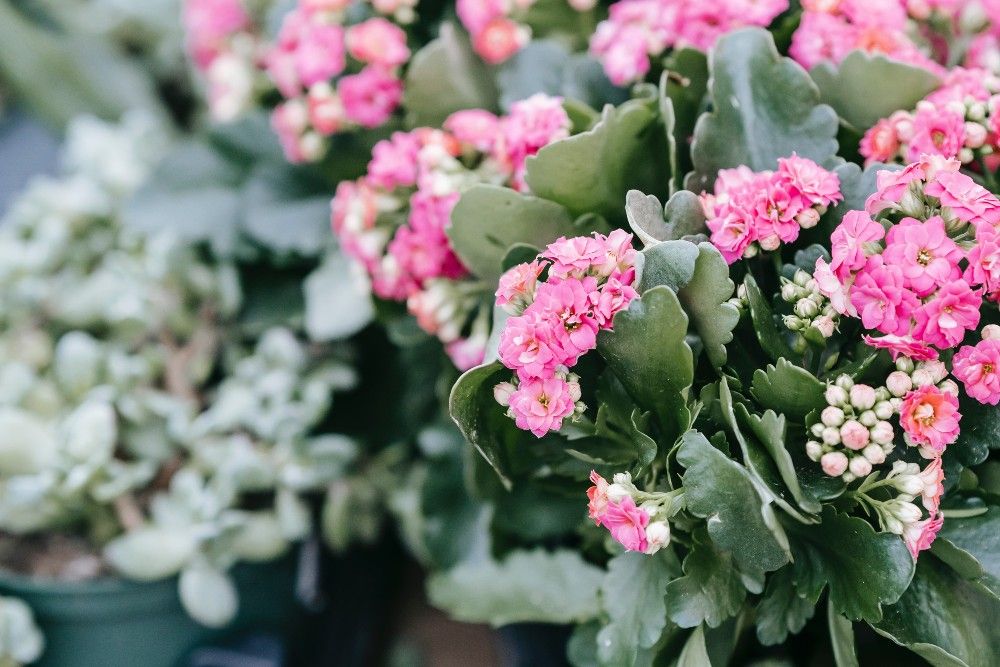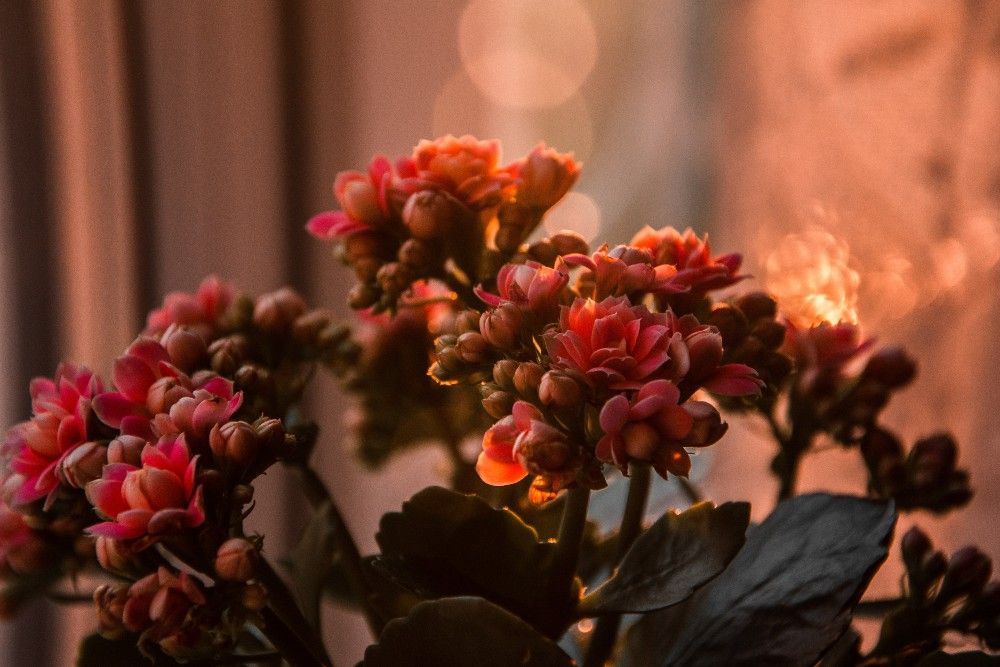Classified as tropical succulents, Kalanchoe plants are popular for their thick, waxy leaves and clusters of small fragrant blooms. Flowers can range from red to pink and magenta to orange and yellow. The plant typically blooms in the winter and adds a pop of color to your living space during the colder months, making it the perfect addition to your plant family!
Learn everything about kalanchoe, from how to grow it to its care requirements!
Materials Needed
Image credits: Gary Barnes via Pexels
Here is what you will need to grow and care for your kalanchoe.
- Potting soil
- Container
- Fertilizer
- Kalanchoe plant
- Kalanchoe seeds (optional)
- Pruning shears
- Watering can
How to Grow a Kalanchoe Plant
Image credits: Uriel Mont via Pexels
You can grow Kalanchoes from seed or propagating by cuttings. The plant is also often found in most garden centers during the wintertime to purchase. With over 125 species, one of the most popular is Kalanchoe blossfeldiana, which has many cultivars, including 'Calandiva,' 'Flaming Katy,' 'Melody,' 'Yellow Darling,' 'Tessa,' and 'Tom Thumb.'
Growing From Seeds
To grow Kalanchoe from seed, start by filling a container or seed tray with high-quality potting soil. The best type of soil for kalanchoe seeds is a cactus mix with pearlite or vermiculite or seed starting mix.
After filling the container, water the soil thoroughly and place multiple seeds on the top layer but do not bury the seeds. If you choose a seed tray, you'll have to eventually transfer the seedlings to a larger container as the plant matures.
Cover the plant with plastic wrap to create humidity during the germination process. Keep the seeds in a dark area at 71 to 76 degrees Fahrenheit until germination occurs. Kalanchoe seeds germinate in about ten days.
Once the seedlings emerge, remove the plastic wrap and transition the seedlings to sunlight. Start with a few minutes a day to not shock the plant, and slowly increase how much sunlight is given each time. Be sure to thin the seedlings and only keep ones that appear healthy and strong.
Growing From Cuttings
Another way to grow kalanchoe is by propagating the plant from offsets or cuttings. The best time to propagate is in the spring or early summertime.
Using sharp pruning shears, take a cutting from the plant about 2 to 3 inches long with at least two leaves. Before planting, allow the cuttings to callus over by letting them air dry for a few days. Place the cuttings into a container 6 to 8 inches wide filled with a potting soil mix of 50 percent peat moss and 50 percent perlite.
Cover the container with a plastic bag or wrap to increase humidity, and patiently wait. Cuttings will be ready to transplant into a larger container in as little as 14 to 21 days.
Kalanchoe Care Requirements
Image credits: Irina Iriser via Pexels
Kalanchoes require minimal care and help to brighten up any space with their beautiful and long-lasting blooms.
Watering Needs
Kalanchoes are drought-tolerant, as they store water in their leaves. Water only when the top few inches of soil feel dry to the touch. Too much water can cause Kalanchoe plants to become waterlogged, leading to root rot and disease.
On the other hand, do not allow the soil to dry out since insufficient water will cause wilting leaves and fewer blooms.
When in doubt, use a moister meter to ensure your plant gets the right amount of water.
Light & Temperature
Kalanchoe plants need full sun to grow healthy and strong. The plant prefers bright light, but do not place it in direct all-day sunlight when it's flowering. Typically flowers last up to eight weeks. During this time, place the plant in an area that receives sunlight for only half the day. Doing so protects the plant's blooms and keeps them looking vibrant.
The best temperature for growing Kalanchoe plants is 50 to 70 degrees Fahrenheit. This plant thrives in cooler night temperatures, from 45 to 65 degrees Fahrenheit, which helps their flowers last longer.
Kalanchoe plants will rebloom every year with proper care during the fall months. Move the plant to a location that receives 14 hours of darkness per day and eight hours of light. After four to six weeks in this environment, Kalanchoes will be ready to bloom again in January or February.
Type of Fertilizer
Kalanchoe plants require regular feeding like most houseplants; however, do not give the plant fertilizer when it's in bloom. Most plants bloom naturally during the early springtime, but some can also be forced to bloom in the winter.
During the late spring to fall months, fertilize with low-nitrogen plant food once a month. You can also use a slow-release fertilizer during this time and fertilize less often.
Beautiful Blooms Right at Home
With these tips and guidance, you can reap the rewards of growing and caring for Kalanchoe! Enjoy its beautiful blooms all winter long and bring a little piece of spring indoors. However, this plant is toxic, so keep it away from pets and children.
Do you have any tips on how to care for a Kalanchoe plant? Leave a comment down below and share your experience!




